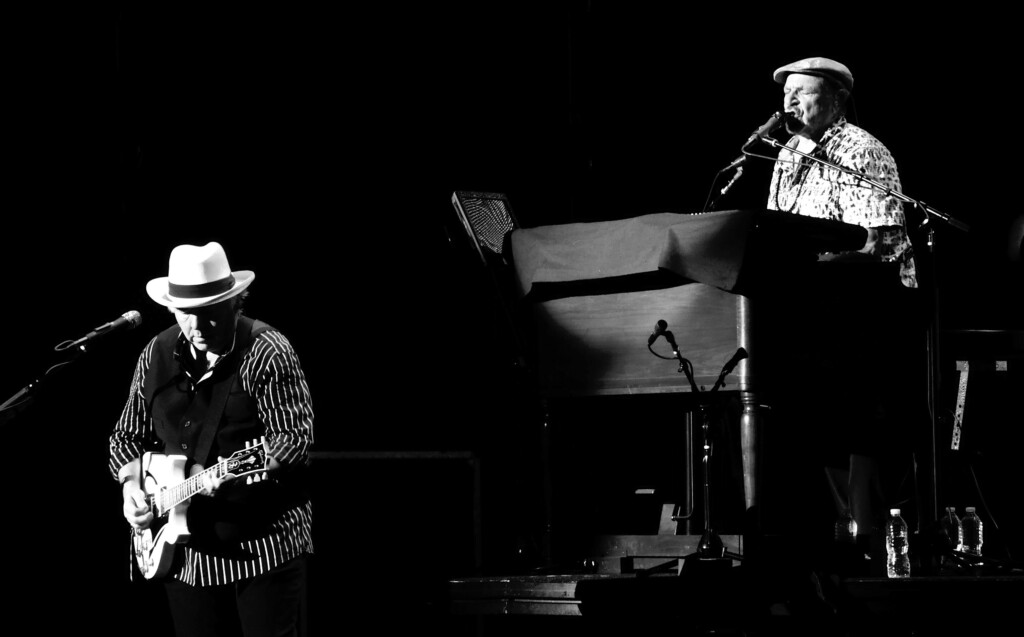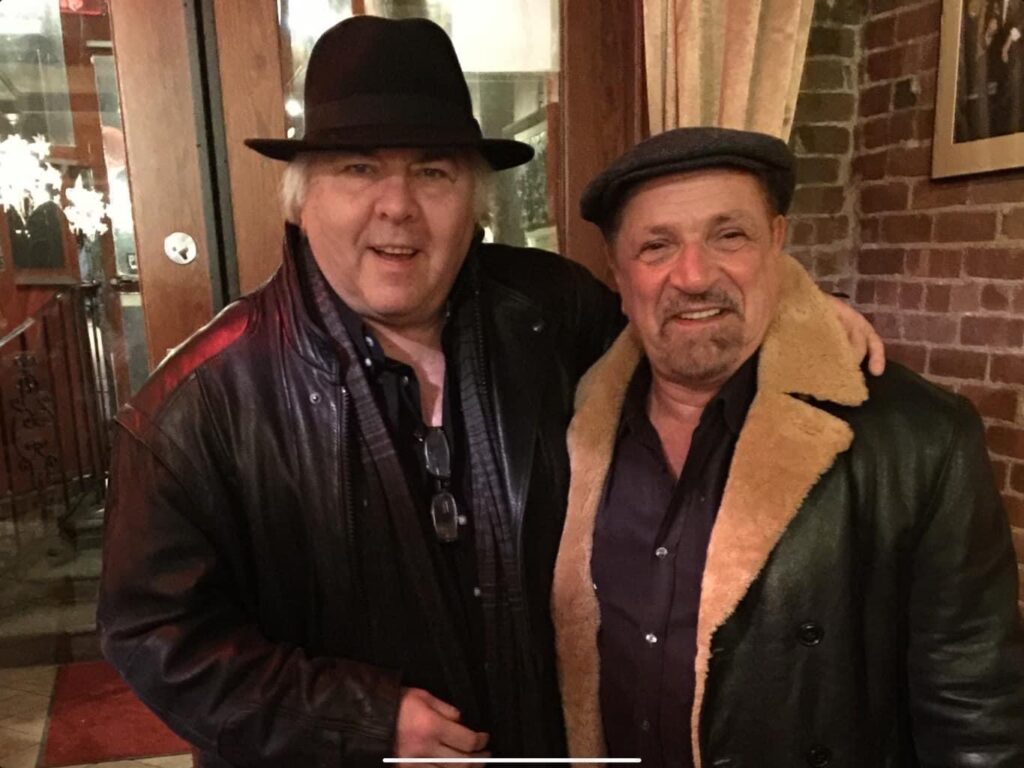On a crisp Saturday night last November, the Rascals played to an enthusiastic crowd at the Kodak Theater. Clips of the band in their 1960s prime were projected in the background. At center stage was Felix Cavaliere, the band’s lead singer and keyboardist. To his side and seated was guitarist Gene Cornish, who last appeared with the Rascals in Rochester in 2013. As it so happened, it was also the birthday of Cornish’s mother, Ada, who passed away in 2006. He spent a few moments reminiscing about his mother, ending with a joyous “I’m home!”
In the late 1960s, the Rascals had a streak of Top 40 hits with songs like “Good Lovin’,” “How Can I Be Sure?,” “Groovin’,” “It’s a Beautiful Morning,” and “People Got To Be Free.” In 1997, Cornish became the first Rochester native to be inducted into the Rock & Roll Hall of Fame. His autobiography, Good Lovin’: My Life as a Rascal, is a candid chronicle of his migration to Rochester from Canada, touring the Eastern Seaboard with his early bands, his rise to fame with the Rascals, his post-Rascals career and descent into substance abuse and homelessness, and back again. The idea to write the book came from his fiancée, Debbee Davis. “Debbee has heard me tell stories on stage and says that I’m a good storyteller. She said to me, ‘Why don’t you write a book? You can document everything that’s in your mind, so someday when you’re not here, people can still enjoy what you have to offer.”
Cornish’s journey in music began when he saw Elvis Presley perform on The Dorsey Brothers Show in 1956. Soon after, he took up guitar and formed his own band, the Satellites. At a time when parents didn’t know what to make of rock and roll, Ada and Cornish’s father Ted “embraced my desire to make rock and roll totally. They supported me 100 percent.” When Cornish was fifteen, Ada introduced him to Ed Sullivan, telling the TV host that her son would be on his show one day. Ted escorted the Satellites to gigs in Boston, Baltimore, and parts of Canada as well as to recording sessions in Philadelphia. Following his graduation from Franklin High School in 1963, Cornish formed the Unbeatables, whose formation coincided with the arrival of a certain band from Liverpool, England. Cornish wrote and recorded “I Want To Be a Beatle,” a pitch-perfect parody of the Fab Four. Locally, the Unbeatables opened for Peter & Gordon at the War Memorial, and the song became a hit in Puerto Rico.
They found their way to New York, but his bandmates soon got homesick. Cornish, determined to make it, stayed in New York and got into Joey Dee’s band. It was there he met his future bandmates—Cavaliere, Eddie Brigati, and Dino Danelli. The four soon got fed up having to deal with Dee’s sketchier associations and left. Cavaliere had been talking to Cornish about forming their own band, but Cornish wasn’t convinced. “My Dad said, ‘Give it a shot! You’ve got nothing to lose!’” After residencies in New Jersey and Long Island, they signed with Atlantic Records and worked with Arif Martin, who would later work with Aretha Franklin and the Bee Gees.
“THE RASCALS ARE COMING!” declared Shea Stadium’s scoreboard at the legendary Beatles concert in 1965. The following spring, the Rascals released their debut album, which contained the hits “Good Lovin’” and their rendition of Wilson Pickett’s “In the Midnight Hour.” Cornish got to sing lead on their rendition of Dylan’s “Like a Rolling Stone.” Throughout their career, Cavaliere and Brigati handled songwriting and vocal duties, but occasionally Cornish got his shot to do both. Appearing on The Ed Sullivan Show, Cornish fulfilled the prophecy his mother had made years earlier: “I brought my mom and dad onstage afterward. We took a picture with him, and my mom said, ‘I told you!’” When they toured the South, the Rascals made a point to have a Black artist on the bill, and turned down a very lucrative offer to tour South Africa after they had been informed they would be playing to segregated audiences. Says Cornish: “It cost us a lot of money to make that decision, but it was the right thing to do.”
With success came its trappings. Cornish helped his parents to retire and moved them to Long Island; Ted helped run the Rascals’ fan club. By the time Cornish left the Rascals in 1971, he’d acquired a Rolls Royce and several horses. Not wanting to disappoint his father, Cornish avoided using recreational drugs during the 1960s, but when Ted passed away in 1973, all bets were off. Cornish tried marijuana for the first time the night after he buried his father and soon graduated to cocaine. Nevertheless, Cornish teamed up with Danelli in two bands in the 1970s: Bulldog, whose song “No” was a top ten hit in Australia; and Fotomaker, a power-pop band that managed to garner a small following on Long Island. However, Cornish’s cocaine use continued to escalate, and by the mid-1980s, he and his mother were living in a recording studio.
In 2012, Cornish’s fortunes changed. He met Davis, who inspired his current sobriety. “She stays on me about my health and helps me with my finances. She’s the perfect partner to have.” Later that year, Cornish was approached by Steven Van Zandt to do Once Upon A Dream, a reunion tour with the original Rascals. The Rascals had done reunions before, but this one was different: Van Zandt conceptualized a show—think Jersey Boys but with the actual band. The show debuted on Broadway in 2013 and toured several upstate cities, including Rochester. The experience reinvigorated Cornish: “Oh my God, it brought us back to life! I got to share that experience with Debbee, and we had a great time.”
Over the years, Cornish has fielded offers from high-profile music writers—namely, Dave Marsh—to tell his story. It was when meeting Stephen Miller at a recording studio on Long Island that he found a collaborator who clicked. Miller recalls the unusual way Cornish auditioned him: “He played twenty songs from the ’50s and ’60s, and I guessed all of them correctly.”
Cornish says of Miller, who was born the year the Rascals formed, “He’s younger than me, but he’s an old soul. He’s been around rock and roll his whole life.”
To write the book, Miller and Cornish met at the home of a mutual friend in New Jersey. “I would tape him at half-hour intervals for maybe five or six hours each Friday,” says Miller. “Saturday morning, I would type verbatim what he said, then edit from there. We did this for almost a year.”
Cornish describes writing the book as an “exorcism.”
Cornish currently lives in Bergen County, New Jersey. When in Rochester, he likes to visit his old bandmates and friends at the House of Guitars and the Rochester Music Hall of Fame, the latter of which he was an inaugural inductee in 2012. He continues to perform, but after suffering a heart attack onstage in 2018, he stays seated during performances. Danelli’s passing last December dashed any hopes of the original Rascals reuniting. “I miss him dearly,” says Cornish. Thanks to this book, those memories are preserved forever. “I got to exorcise everything that was in my heart, soul, and memory. It was a really good thing for me, and I’m glad I did it.”
Views: 34






